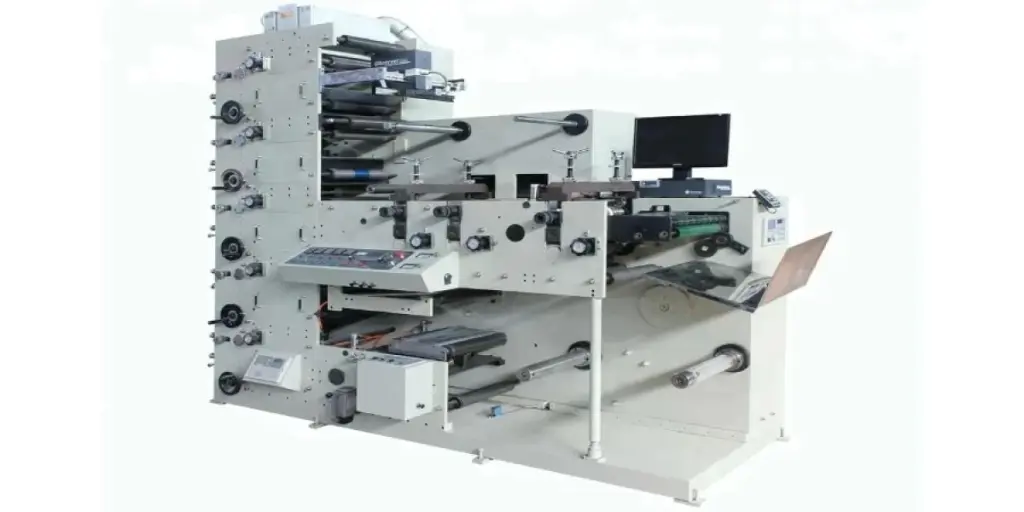The modern world continues to see changes in every aspect of technology advancement. The printing industry is no exception. It’s adopting innovative techniques to help modern printing businesses remain competitive and productive.
Whether you’re looking to help vendors cut costs or improve efficiency, staying abreast of emerging trends is vital to help printer owners buy cost-effective printers that generate high quality prints. This article will discuss the latest trends in printing technologies.
Table of Contents
Overview of the printing machinery market
6 emerging trends driving the future of the printing sector
Final words
Overview of the printing machinery market
The increasing global demand for printing machinery is poised to expand revenue at a moderate compound annual growth rate (CAGR) of 2.2% to reach US $20.5 billion by 2031. A range of factors are likely to boost the production and sales of printing machinery during the forecast period.
One of the key factors is the increasing use of digital printers that are preferred due to their ability to print on substrate. In addition, rapid advances in technology, such as 3D printing and big data, are expected to boost this growth. Furthermore, the rise in demand of offset lithography printing is expected to drive the machinery market.
Asia-Pacific leads the printing machinery market due to the rising adoption of printing media in the region. North America is expected to be the fastest-developing region during the forecast period.
6 emerging trends driving the future of the printing sector

1. The importance of sustainability
Sustainability is becoming increasingly important in the printing industry, as more businesses are looking for ways to reduce their environmental impact and become more economically sustainable.
In response to this trend, the printing industry is reinventing itself by adopting new technologies and practices that are more environmentally friendly and efficient. These technologies include:
Digital printing
Digital printing is more energy-efficient than traditional offset printing as it requires fewer steps and processes to produce printed products, thus generating fewer greenhouse gas emissions. It also allows businesses to produce customized products on demand, reducing the need for inventory and excess production.
UV printing
UV printing is a process that uses ultraviolet light to cure inks and coatings, rather than traditional heat or solvents. This process is becoming increasingly popular in the printing industry because it is more environmentally friendly and efficient.
One of the main benefits of UV printing is that it uses less energy and produces fewer emissions compared to traditional printing methods. Additionally, UV printing produces less waste and generates fewer volatile organic compounds (VOCs), which are harmful to the environment.
Carbon balanced printing
Carbon balanced printing is a trend in the printing industry that aims to offset the carbon emissions associated with the production of printed materials. This is typically achieved through the use of renewable energy sources and carbon offset projects, such as reforestation and renewable energy projects.
Carbon balanced printing is more environmentally friendly because it helps to reduce the carbon footprint of the printing industry, which is a significant contributor to greenhouse gas emissions. Further, carbon balanced printing is more efficient as it reduces the energy usage of the printing process, which ultimately leads to cost savings for businesses.
Sustainable printing inks
Sustainable printing inks are proving to be more environmentally friendly and efficient because they are made from renewable resources, such as plant-based oils and resins, rather than traditional, fossil-fuel-based inks. Also, these inks have a lower carbon footprint and emit fewer harmful emissions during production, making them a more sustainable choice for the printing industry.
DTF printing
DTF (Direct to Fabric) printing is a printing technique that is gaining popularity in the printing industry because it is more environmentally friendly and efficient than traditional screen printing methods. DTF printing directly prints onto fabric using digital printing technology, which reduces the need for water, chemicals, and energy compared to traditional screen printing or dye sublimation.
This process is odorless, with one by-product as it uses ink and adhesive where applicable. The inks are water-based. Besides, with DTF printing, you can be more flexible in designing as you can easily print on a wide variety of fabrics to produce different colors, patterns, and effects. This allows for more efficient use of raw materials and resources, thus reducing waste.
2. Cybersecurity
Cybersecurity has long been a major concern for technology-focused industries, including the printing industry. Modern printers are facing a range of threats and vulnerabilities, including:
- Malware and ransomware attacks
- Unauthorized access to data and systems
- Network and data breaches
- Hacking
- Physical threats, such as theft or tampering
To improve printer security, businesses can adopt the latest technologies, including:
- Network security protocols such as firewalls and encryption to protect against cyber attacks
- Printer security software that can detect and prevent malware and ransomware attacks
- Physical security measures such as security cameras, access controls, and tamper-proof seals to prevent unauthorized access to printers
- Regular printer maintenance and software updates to ensure that printers are running securely and efficiently
- Employee training and awareness programs to educate employees about the importance of printer security and how to identify and prevent potential threats.
3. Demand for personalization

Businesses are looking for ways to produce customized products on demand. Some of the top ways in which demand for personalization has affected the printing sector include:
- Increased use of digital printing, which allows businesses to produce customized products quickly and efficiently
- Growth of on-demand printing, which enables businesses to produce products as they are needed, reducing the need for inventory and excess production
- Rising demand for personalized packaging and marketing materials, which requires advanced printing technologies and capabilities
- Increased use of variable data printing, which allows businesses to customize products with unique images, text, and graphics
- Growing demand for personalized experiences, which is driving the development of new technologies and approaches to printing, such as augmented reality and personalized QR codes.
4. The rise of digital printing
The rise of digital printing has had a significant impact on the printing industry, as it has allowed businesses to produce customized products on demand and has reduced the need for traditional printing methods, such as offset printing. Some of the latest advancements in digital printing include:
- High-speed printing: Many digital printing systems can now print at speeds that are comparable to traditional offset printing systems, making them suitable for high-volume printing applications.
- Variable data printing: Digital printing allows businesses to produce customized products on demand, using variable data printing techniques to personalize each item with unique text, images, or other content.
- 3D printing: Some digital printing systems can produce 3D printed objects, allowing businesses to produce customized products in a variety of shapes and sizes.
- Printing on non-traditional materials: Digital printing technology has made it possible to print on a wide range of materials, including plastics, metals, and fabrics, opening up new opportunities for businesses in various industries.
5. Mobile printing – print anytime, anywhere

Mobile printing, also known as cloud-based printing, is a printing method that allows manufacturers to print documents and other materials from their mobile devices, such as smartphones and tablets, using cloud-based printing services. Mobile printing has had a significant impact on the printing industry by offering several benefits, including:
- Increased convenience: Users can print from anywhere, at any time, without physically connecting to a printer.
- Enhanced collaboration: Manufacturers can share documents and other materials with colleagues, clients, and other stakeholders in real time.
- Increased efficiency: Users can use cloud-based printing to print-on-demand, reducing the need for pre-printed materials and minimizing waste.
The following are a few examples of mobile printing technologies that you can consider for your business:
- Cloud-based print management systems: These systems allow businesses to centrally manage and monitor their printing operations across multiple locations and devices. They can be accessed from any device with internet access and allow users to track print usage, set quotas, and set print rules for specific users or groups. Examples of machines used in this technology include multifunction printers (MFPs), copiers, and 3D printers.
- Cloud-based print-on-demand services: These services allow businesses to order custom print products, such as marketing materials or merchandise, on an as-needed basis. The orders are placed online and shipped directly to the customer. Examples of machines used in this technology include digital printing presses and 3D printers.
- Cloud-based document storage and sharing: This technology allows businesses to store and share documents in the cloud, eliminating the need for physical storage and enabling easy collaboration and access from any device. Examples of machines used in this technology include MFPs with cloud connectivity and scanning capabilities.
- Cloud-based 3D printing services: These services allow businesses to order custom 3D printed products on an as-needed basis. The orders are placed online and shipped directly to the customer. Examples of machines used in this technology include 3D printers with cloud connectivity.
6. Print-as-a-Service
PraaS, or Printing as a Service, is a business model that allows users to access printing capabilities on a subscription or pay-per-use basis.
This emerging trend has a number of benefits, including:
- Reduced upfront costs
- Flexible pricing
- Access to a wider range of printing capabilities
PraaS is contributing to the growth of the printing industry by providing a more cost-effective and convenient way for businesses to access printing services, and by making it easier for smaller companies to enter the market.
One example of PraaS emerging technology is cloud-based print-on-demand (POD) services. These services allow users to order and print customized products, such as T-shirts, mugs, and business cards, from anywhere. These services use cloud-based technology to process orders and send them to the appropriate printing machines for production.
Some popular machines used in POD services include:
- Direct-to-garment printers: These printers use inkjet technology to print designs directly onto fabric, such as T-shirts, hoodies, and hats.
- Sublimation printers: These printers use heat and pressure to transfer designs onto materials such as ceramic mugs, phone cases, and mousepads.
- Digital offset printers: These printers use digital technology to print high-quality documents and products such as brochures, business cards, and labels.
Final words
The above-emerging printing trends are having a significant impact on modern businesses. Businesses can now scale their printing needs up or down, depending on their current needs, as they can operate without the need for physical access to a printer.
Furthermore, they can boost their operations by reducing costs, streamlining processes, and increasing efficiency. Lastly, businesses can access new markets and expand their reach by making it easier to produce and distribute customized products on demand.




